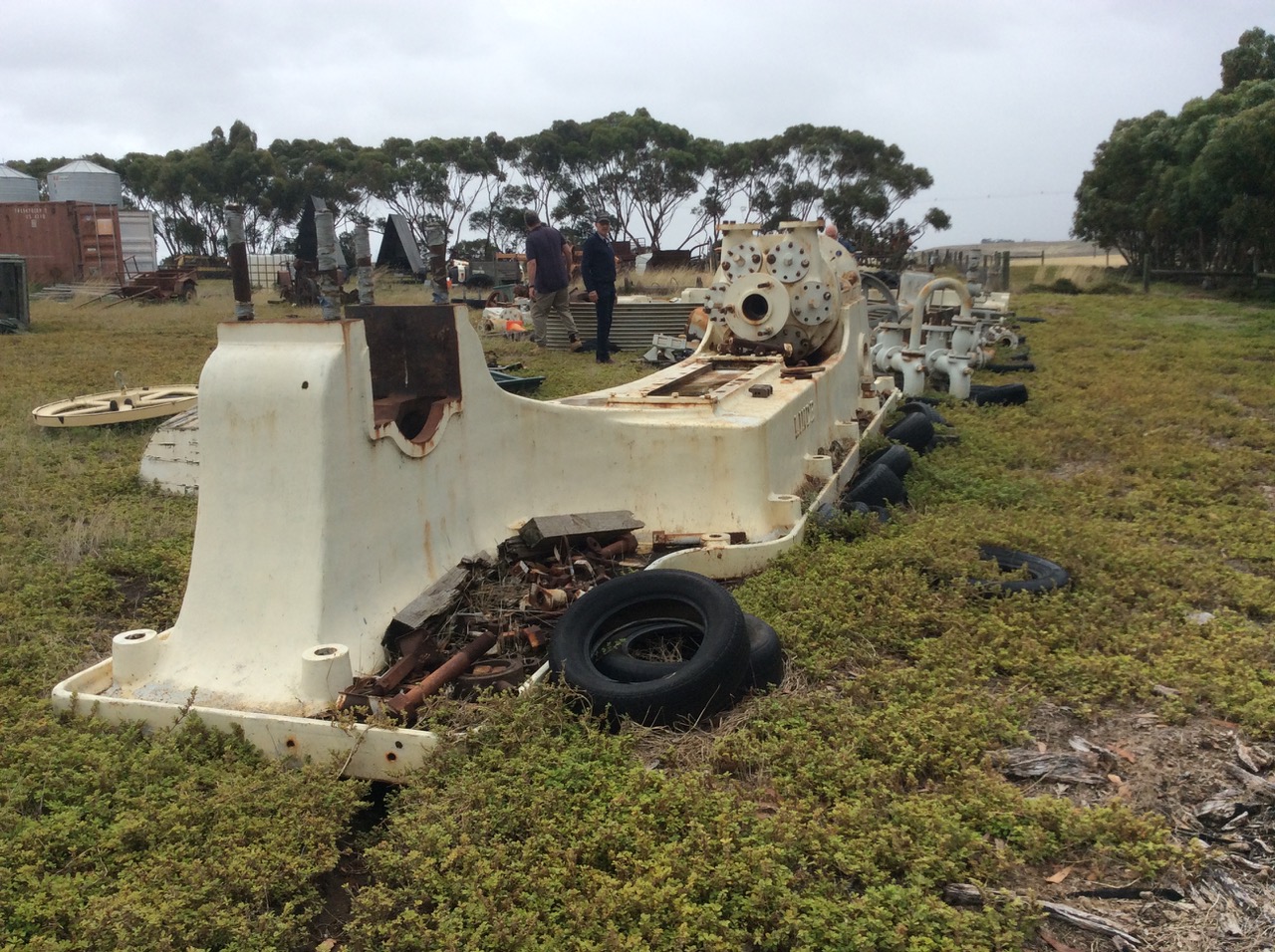Paying tribute to James Harrison

On Thursday, June 27 the National Trust and James Harrison’s descendants held an event at Eastern Cemetery in Geelong to commemorate the restoration of Harrison’s grave.
James Harrison moved to Australia from Scotland in 1837, purchased a printing press and founded The Geelong Advertiser. Throughout his life he was hailed as a brilliant engineer, a successful businessman, a journalist, and a politician.
However, he is perhaps most famous for creating the first commercial ice-making machine in 1854. He came up with the idea of refrigeration when he noticed that ether evaporating off metal typing equipment cooled the metal.
Recognising a hero
Harrison’s descendants have continued to champion his work, and his great-grandchildren attended the event – including Mark Harrison, Jennifer Harrison and Helen Underhill (née Harrison).
Graham Hobbs, President of the Geelong branch of the National Trust, spoke of Harrison’s life and achievements.
“I want to ask you to be ambassadors for James Harrison,” Hobbs said to attendees. “Because he doesn’t have enough recognition, I believe.”
The gravesite began to deteriorate about 10 years ago, according to Harrison’s family. Harrison’s grandson, Jim, left a legacy in his will for the grave to be restored.
Mark said the family wanted to retain the original character of the grave when they commissioned the restoration.
“My father wanted to keep the look and feel to reflect a grave of this age,” said Mark.
One of the issues they faced was that, according to National Trust principles, the original stone should not be re-worked or changed too much.
“The stonemasons, Bartlett Brothers, didn’t have much lead time but have done an excellent job of restoring the grave,” said chair of the GRBNT City of Design Sub-Committee, Lex Chalmers, OAM.
“The lead lettering of Harrison’s epitaph had weathered but they have managed to restore it somewhat.”
Due to the lack of monuments recognising Harrison in Geelong, the National Trust and Harrison’s descendants feel it’s important that his grave remains a tangible reminder of everything he achieved.


The Linde machine
While Harrison may have invented the first practical vapor compression refrigeration machine, a German engineer called Carl von Linde refined Harrison’s process further. He used ammonia as the chemical component and designed larger units that could give precise calculations of efficiency. These were called Linde steam-powered refrigeration machines.
The Geelong meatworks commissioned three of the machines from Europe, which were installed in 1910. But by the late 1970s, electricity had become the cheaper power source and the Linde machines became obsolete.
One of the machines was donated to the Rotary Club of Geelong, where Harrison’s biographer Dr Roy Lang, who wrote James Harrison, Pioneering Genius was the president. A dedicated group restored the machine in the hopes it would be displayed at a museum, but the plans fell through.
After a few moves to various storage spots, the Geelong Showgrounds Museum and Vintage Machinery Group now plan to re-erect the Linde machine at the Geelong Royal Showgrounds, where it will commemorate James Harrison’s groundbreaking refrigeration technology.
Engineering plans for the machine’s concrete foundations are ready, with offers of transport assistance to bring its 20 tonnes to the site where the Vintage Machinery Group will work to re-erect it. The volunteers will sand and paint the machine, have some components machined and concrete poured.
Donations to the project are welcome. Please email Michelle Huston at [email protected] for more information.

This article appears in Ecolibrium’s August-September 2024 edition
View the archive of previous editions
Latest edition
See everything from the latest edition of Ecolibrium, AIRAH’s official journal.




